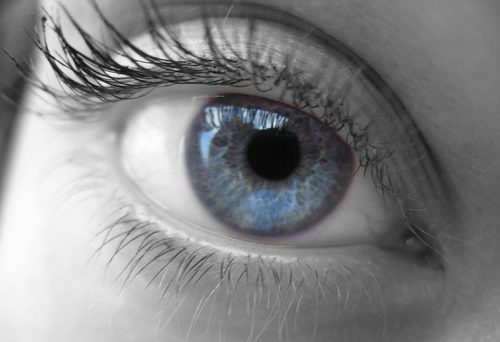Long eyelashes have long been a symbol of beauty and are also considered a sign of femininity in many ancient and modern cultures.
Because of this, many women are interested in how to grow longer eyelashes or enhance the length of their eyelashes artificially, using mascara, false eyelashes and eyelash extensions. On the other hand, Hadza women are known to trim their own eyelashes.
An eyelash is one of the hairs that grow at the edge of your eyelid. Eyelashes are designed to protect the eye from dust and debris and perform many of the same functions as whiskers do on a mouse or cat in the sense that they are touch-sensitive, thus providing warning that an object (such as a dust mite or insect) is near the eye (which is then closed reflexively).
This makes it plain why eyelash health and eyelash growth can be important considerations for any person, not only women.
It can take seven to eight weeks of eyelash growth for lashes to grow back if they’ve been pulled out.
Kohl has been worn as far back as the Bronze Age to protect and enhance eyelashes. In Ancient Egypt the wealthy used kohl around their eyes not only for beauty, but also to protect the eyes from dust, sand and bugs.
Modern eye makeup includes mascara (for the illusion of longer eyelashes), eyeliner, eye putty, and eye shadow to emphasize the eyes. The twentieth century saw the beginning of convincing-looking false eyelashes, becoming popular in the 1960s. Permanent eyelash tints and eyelash extensions have also become popular procedures, even in fairly basic salons, as an affordable alternative to being able to grow longer eyelashes.
The modern woman’s focus in their quest on how to grow longer eyelashes, seems to be on a relatively new prescription-only product marketed as Latisse which is said to guarantee eyelash growth.
There are a number of diseases or disorders involving the eyelashes:
- Madarosis is the loss of eyelashes
- Blepharitis is the irritation of the lid margin (where eyelashes join the eyelid). Eyelids are red and itching. The skin often becomes flaky. The eyelashes may fall.
- Distichiasis is the abnormal growth of lashes from certain areas of the eyelid.
- Trichiasis is ingrown eyelashes
- Eyelashes may become infested with crab louse parasites
- An external hordeolum, or stye, is a purulent inflammation of infected eyelash follicles and surrounding sebaceous (Zeis) and apocrine (Moll) glands of the lid margin.
- Trichotillomania is a disorder that urges the sufferer to pull out scalp hair, eyelashes, etc.
- Demodex folliculorum (or the demodicid), is a small mite that lives, harmlessly, in eyelash and other hair follicles and around 98% of people have these mites living on them. Occasionally they can cause blepharitis.
Some tips to help grow your eyelashes:
- Improve your diet to grow longer eyelashes naturally. Without proper nutrition, your body will cease to grow hair, fingernails and even eyelashes. Likewise, anything that makes your hair grow also will help your eyelashes grow.
- Apply natural lubricants, such as olive oil or petroleum jelly, to your eyelashes to make them strong. Put the product on your eyelashes at night and wash it off in the morning.
- Apply vitamin E oil to your eyelashes with a clean eyelash brush.
- Brush your eyelashes regularly
References: http://www.ehow.com/how_4471556_grow-longer-eyelashes-naturally.html


 Fill out the form below to sign up to our free natural health and healing newsletter and stay up to date on our latest articles about holistic healing therapies and effective home remedies for common ailments. As a thank you for joining our newsletter, we’ll also send you
Fill out the form below to sign up to our free natural health and healing newsletter and stay up to date on our latest articles about holistic healing therapies and effective home remedies for common ailments. As a thank you for joining our newsletter, we’ll also send you